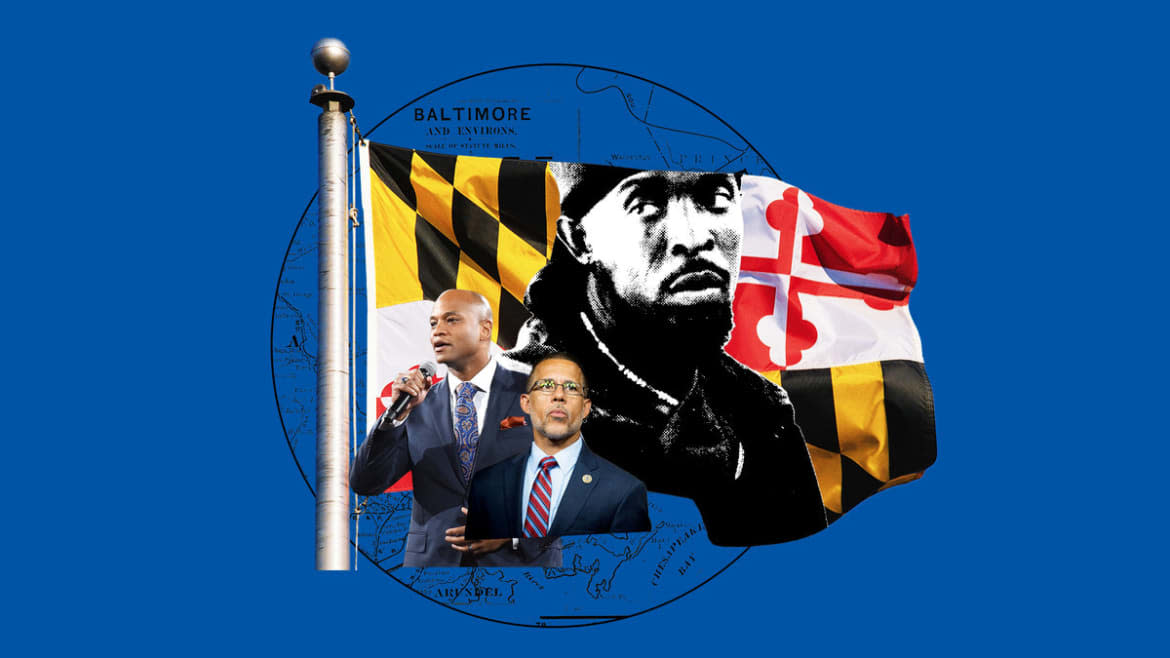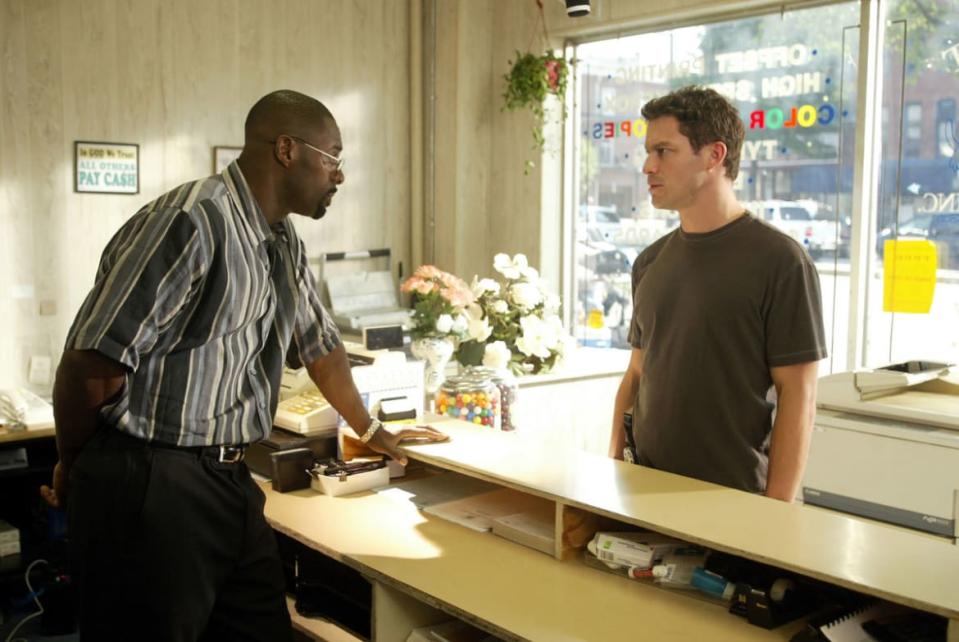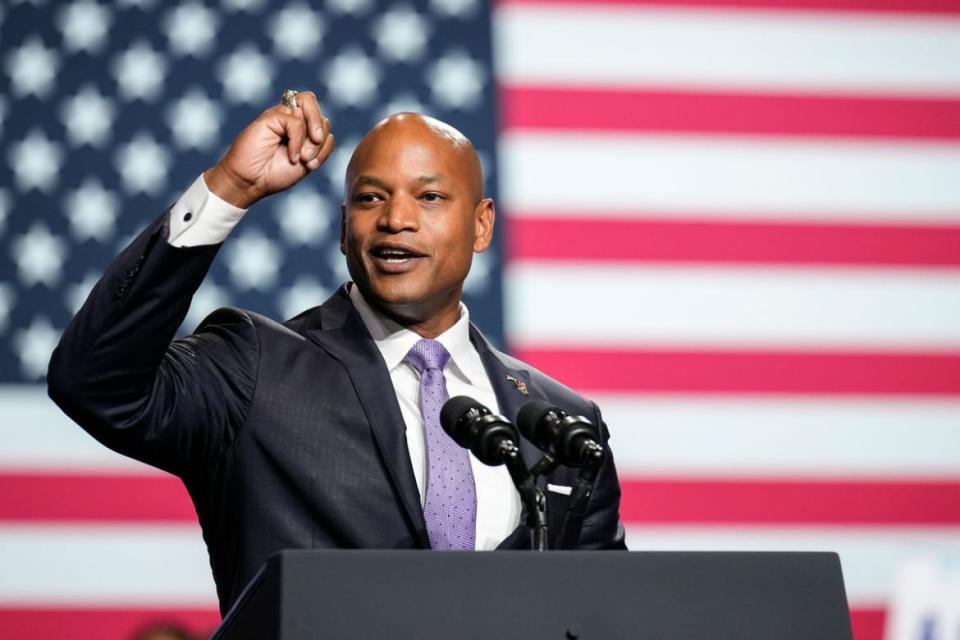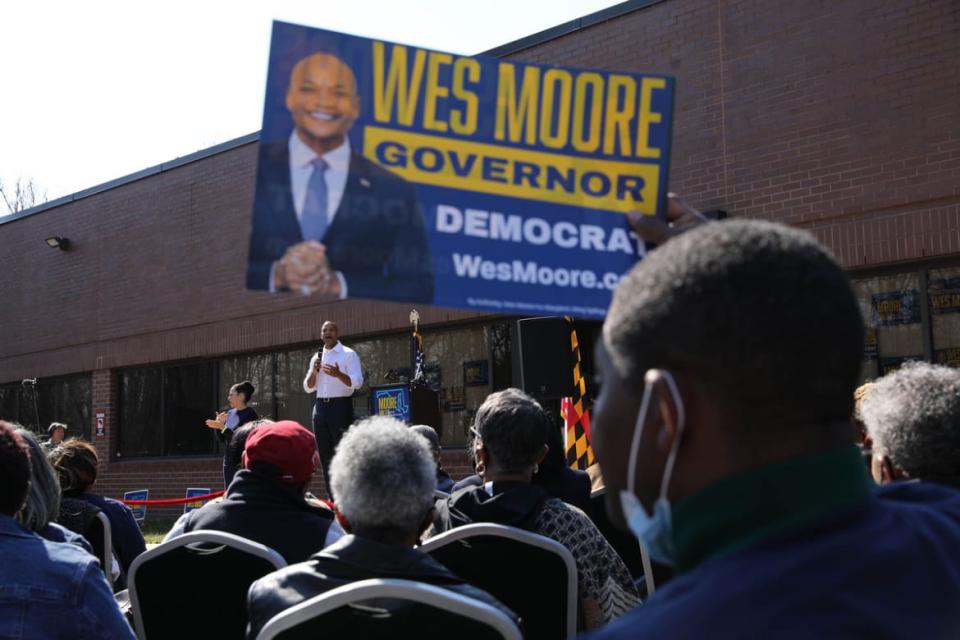Maryland’s New Black Leaders Must Leave ‘The Wire’ Mentality in the Past to Move Forward

- Oops!Something went wrong.Please try again later.
- Oops!Something went wrong.Please try again later.
Black Democrats are poised to make history by winning the top offices of Maryland in November. But to govern effectively, they must be prepared to address the mindset of violence and crime modeled in the acclaimed Baltimore-set HBO drama, The Wire.
That means moving beyond the usual calls for reforms in the criminal justice system and economic mobility. What the would-be leaders also need to explore are ways to break the chains of “mental slavery” that psychiatrist Alvin Poussaint, among others, claim exacerbates “Black on Black” crime.
The Democratic nominee for governor is Wes Moore, an author, educator, and army veteran who promises to expand economic opportunity, upgrade transportation operations, and improve access to health care and good public education.
Black Leaders Should Focus on Economic Mobility, Not Crime
The nominee for attorney general is Rep. Anthony Brown, a former Maryland lieutenant governor who campaigned on protecting voting rights, reproductive rights, gun violence prevention, and criminal justice reform.
They are running against Republican nominees with extremist backgrounds.
For governor, the GOP has selected Dan Cox, a state legislator who reportedly deleted more than 1,000 controversial posts on Gab, a social media website noted for hate speech. Moreover, his campaign website touted his role in attempting to thwart the certification of the 2020 presidential election, and demonizing former Vice President Mike Pence as a traitor for carrying out his constitutional duty. (Cox is backed by former President Donald Trump, but not by Larry Hogan, the outgoing Republican governor, who has questioned his fitness for office.)
The Republican nominee for attorney general, Michael Peroutka, is a former Anne Arundel county legislator who served as a board member for the neo-Confederate secessionist group, the League of the South, from 2012 to 2014. During a League event, Peroutka reportedly bemoaned Maryland’s refusal to secede during the Civil War.
It’s such reactionary stances that make this election closer than it might be otherwise. The state of roughly 6 million people has elected governors from both parties in recent cycles. However, by virtue of racial voting patterns, the Republicans should have the edge—were it not for their extreme positions.

A scene from “The Wire.”
The Shadow of Baltimore
Blacks in Maryland comprise about 30 percent of the population and more than half of the Democratic base. The engine of its state politics consists of the suburban counties that border Washington D.C. Foremost among them is Prince George’s County—with more than 900,000 residents, about 60 percent Black.
As D.C. has gentrified, Black residents have migrated to Prince George’s County and Montgomery County for many years. Along with a good number of middle class Blacks from other states, they have also established a presence across the 24 counties of the state.
As a result, the expanding talent pool of suburban professionals—Moore was raised in Montgomery County, while Brown relocated to Prince George’s from Long Island, New York—are driving participation in state politics. If elected, they would be the first Black political leaders elected to run major offices.

Maryland Democratic gubernatorial candidate Wes Moore.
Is Maryland ready to live up to its historic reputation as the “Free State?”
Looming over the prospects of a Black-led coalition is the shadow of Baltimore.
The rough-and-tumble city of about 600,000 is a power base for Black politicians seeking to compete in statewide elections. However, it suffers from rates of lawlessness that annually set national standards for incidents of violent crime.
Its social woes are evident in many disinvested manufacturing centers of the industrial South and Midwest. Like those cities, Blacks migrated to Baltimore during the mass wave known as the Great Migration. Ignited by the first World War, millions of sharecropper families left the plantations for the jobs, schools, and civil rights of northern cities and “Up-South” cities like Baltimore, where the Bethlehem Steel plant once employed 30,000 workers.
Between 1910 and 1970s, the city’s Black population mushroomed from less than 85,000 (about 15 percent of the overall population) to more than 420,000 and a near majority by 1970. The migration encountered the usual ways of resistance by white authorities: residential segregation, Jim Crow schools, workplace, and public accommodations, and demolition of business districts under “slum clearance” for highway projects.
In the 1970s, Baltimore began a process of rapid economic decline with the flight of factories and the white middle class. The city lost 75 percent of its industrial employment between 1950 and 1995—and over 100,000 manufacturing jobs. With that trend came the rise of poverty, the emergence of the drug trade and turf wars, and incidents of crime and violence primarily in the Black community, which comprises over 60 percent of the city population.
The dynamic has shaped the thinking of voters—white, Black, and in other ethnic communities. And it may hinder the formation of a Black-led political coalition needed to address historic inequities.
The Wire and Black Rage
The Wire, a massively acclaimed crime series that ran on HBO from 2002 to 2008, had a profound effect on shaping the image of Baltimore—and associations of blackness with violent crime—in the American imagination. (This year, the series was honored with a 20th anniversary commemorative podcast, released on HBO Max.)
Created by David Simon, a former police reporter, The Wire portrayed Baltimore through the eyes of law enforcers, reporters, and drug dealers. It introduced a parade of misfit characters to a national audience—notably the studious gangster Stringer Bell, in a role that launched Idris Elba to stardom—before the awakening of the Black Lives Matter movement.
To many people, the Baltimore depicted in The Wire became a symbol of the erosion of American industrial cities, and hope for a Black future. What the show largely avoided, though, were the historical dimensions and maladaptive behaviors probed by psychiatrists William Grier and Price Cobbs in their book, Black Rage.
5 Ways ‘Rick Steves’ Europe’ Can Do Better for Black People
The 1968 study explored the ramifications of slavery and Jim Crow oppression on the individual and collective mindset, and the difficult search for mental wholeness under racist conditions: “Reviewing data during the research and writing of Black Rage, we were impressed with the difficulty facing all of us as we travel from child to adult hoping to end up with a reasonably healthy identity and some feeling of self-worth.”
The Wire would use incidents of Black rage—usually in the form of predatory competition—to undercut characters that modeled civility and decency. An example is the story of the marijuana dealer known as Proposition Joe, played by Robert Chew. He is a philosophical “elder” statesman of a criminal syndicate known as the New Day Co-Op. The respected, overweight gangster promotes a non-violent style of collaboration—serving as a diplomat between feuding young men, and advising them on community and character.
In particular, Joe takes under his wing the troubled young gangster Marlo Stanfield (played by Jamie Hector) and schools him in the ways of peaceful trade. At the end, however, the dystopic Stanfield turns on his father-figure model and participates in his execution. The segment spotlights the value placed on violent competition and generational demolition, however catastrophic to the people.
Post Traumatic Slave Syndrome
The Wire reflected (and thereby reinforced) the dilemma of “mental slavery,” the complicated mindset of individual worthlessness and destructive behavior of an oppressed people.
The 1920s Jamaican Pan-African activist Marcus Garvey famously urged folk to confront it, writing, “We are going to emancipate ourselves from mental slavery, for though others may free the body, none but ourselves can free the mind.” In the 1970s, Garvey’s plea was taken up by fellow Jamaicans Bob Marley and the Wailers in the reggae ballad “Redemption Song.”
Contemporary Black psychologists have revisited the intersection of slavery, racism, inherited behaviors, crime, and violence for corrective insights. Joy DeGruy, for instance, has described the field in the 2005 study, Post Traumatic Slave Syndrome: America's Legacy of Enduring Injury and Healing. It relates to the role of multigenerational trauma and injustices in affecting the socialization and self-worth of a people.
Some of the most damaging outcomes are the violent actions of individuals suffering from low regard for themselves and people. If left unresolved, such diminished souls can behave in ways that further the purpose of racial oppression, writes psychologist Amos Wilson in the 1991 study, Black-on-Black Violence: The Psychodynamics of Black Self-Annihilation in Service of White Domination.

Maryland gubernatorial candidate Wes Moore onstage during his campaign office opening in Prince George’s County on March 5 in Lanham, Maryland.
Initiatives to Reduce Black Crime
Maryland state leaders should consider ways to strengthen Black cultural resources for healing and growth. Of course, the methods suggested in the research of psychologists are not meant to be substitutes for reforms in the criminal justice system and progress in economic mobility. They are meant to supplement such policies.
First, Black leaders must look at ways to better organize the community for crime prevention. This would include mobilizing residents for street watches and devising neighborhood tribunals to resolve "quality of life" offenses. The approach would inculcate in youths a sense of responsibility to protect their community against victimization. More broadly, it would encourage the community’s sense of a right to defend itself against criminal elements.
Four Lessons Georgia Democrats Can Learn From the History of Black Self-Governance in America
Second, leaders should promote educational programs and social media that counter the manufactured desires of “bling” materialism and consumerism. Reducing incentives for crime means developing a healthy respect for living within one’s means, ending cycles of debt, avoiding frivolous spending, and valuing self-improvement. It also means countering models that promote styles of predatory competition or exploitation.
Third, leaders should pay special attention to the urgent needs of young men. They have been the target of destruction in the American system; aside from the focus on crime reduction, authorities have largely ignored the immolation of men in ruin, violence and suicide. As a consequence, according to Black Rage, men have been “so hurt in their manhood that they are now unsure and uneasy as they teach their sons to be men.”
For example, leaders should promote cultural resource programs like “My Brother’s Keeper Alliance'' touted by former President Obama. It seeks to counter feelings of rage with models of self-control, cooperation, love of family and community.
In closing, a victory by Wes Moore and Anthony Brown will be historic, but their words will amount to a tinkling cymbal if they miss the chance to address deeper causes. There is no cure for the violent behavior rooted in generations of racial subjugation, but there may be ways to better manage it by nurturing mental wholeness.
Get the Daily Beast's biggest scoops and scandals delivered right to your inbox. Sign up now.
Stay informed and gain unlimited access to the Daily Beast's unmatched reporting. Subscribe now.

